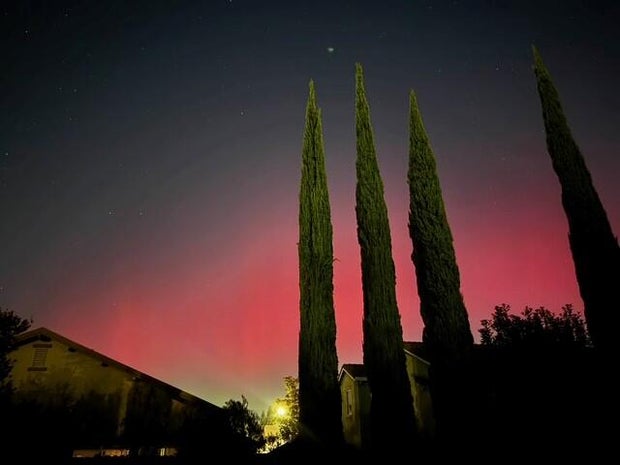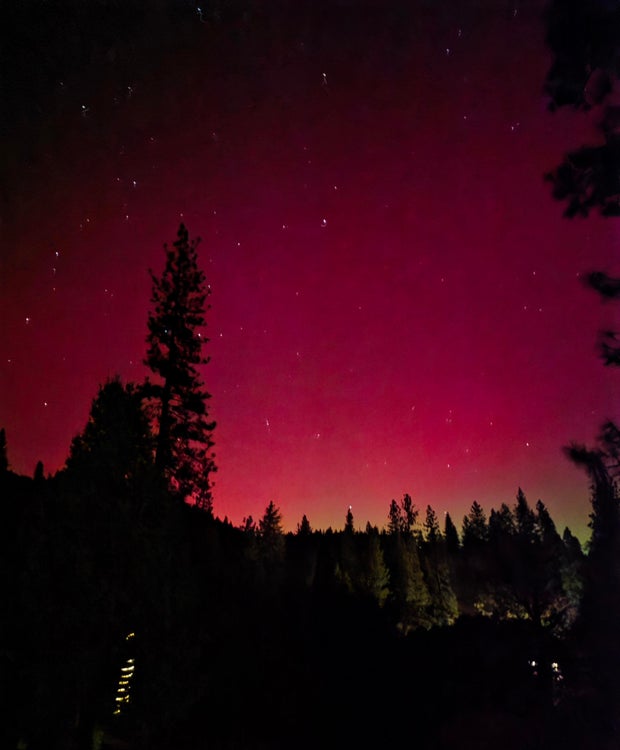Rare Sightings of the Northern Lights Illuminate Northern California
The Aurora Borealis Dazzles on November 11, 2025
On the night of November 11, 2025, residents in Northern California and the Greater Sacramento area experienced a breathtaking display of the Aurora Borealis, commonly known as the Northern Lights. This mesmerizing light show was unexpectedly visible much farther south than usual, captivating onlookers in cities like Sacramento, Roseville, Grass Valley, and even locations such as Dixon, Vacaville, Fairfield, and Vallejo.
A Photographic Marvel
Eyewitnesses shared stunning photographs showcasing the vibrant colors painting the night sky. These images, sent to CBS News Sacramento, highlight the rare event that brightened the evening for many local residents.

Photo captured by Barbara Martinez in Roseville

Image obtained by CBS News Sacramento from Grass Valley
Causes Behind the Spectacle
The vibrant display was attributed to a G4 geomagnetic storm, a severe weather phenomenon that can disrupt satellite communications and GPS systems. This storm was linked to a series of powerful coronal mass ejections (CMEs) from the sun, characterized as the most energetic and rapid in recent observations. The National Oceanic and Atmospheric Administration (NOAA) issued alerts about the storm’s potential impacts, predicting widespread auroras across much of the northern United States.
Timing and Visibility
According to the Space Weather Prediction Center, the best opportunity to witness the Northern Lights was between 7 and 10 p.m. PT on Tuesday night. As the geomagnetic storm continued to affect the atmosphere, a stronger G3-level storm was expected to arrive shortly thereafter, further enhancing the likelihood of vivid aurora sightings.

Captured by Bill Badley in the Natomas area of Sacramento
The Science Behind Auroras
Auroras occur when charged particles from the sun collide with gases in Earth’s atmosphere, creating stunning light displays. These phenomena are most commonly seen in polar regions; however, during severe geomagnetic storms, they can extend much further south.
For those eager to explore more about auroras and their breathtaking beauty, resources like NASA and the NOAA provide in-depth information and updates on geomagnetic activity.
If you were lucky enough to witness this rare event, consider yourself among a select group of individuals who experienced the natural world’s beauty at its finest. The Northern Lights’ uniqueness lies not only in their visual appeal but also in their connection to solar activity and Earth’s magnetic field, making every sighting a remarkable experience.
